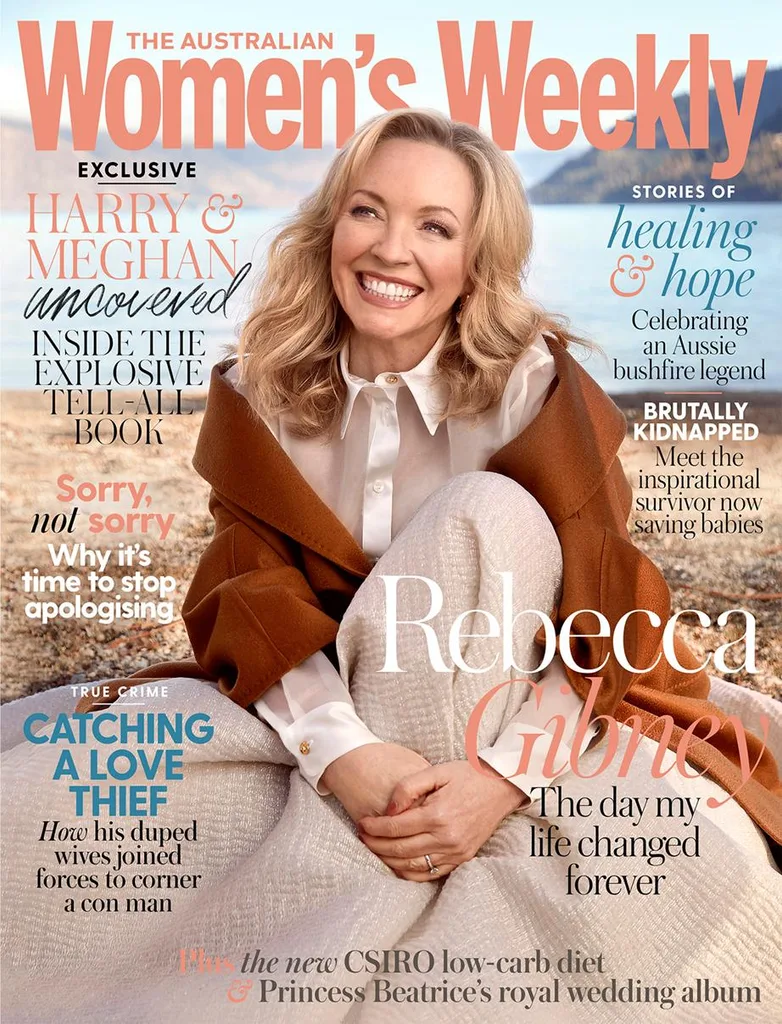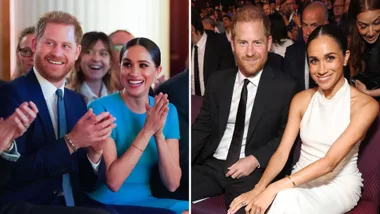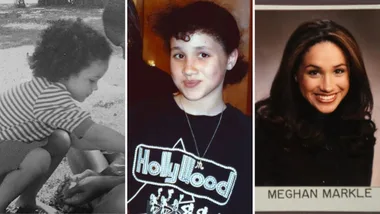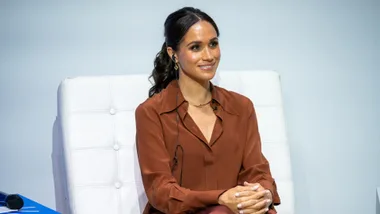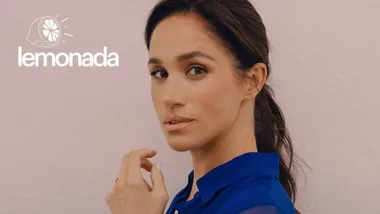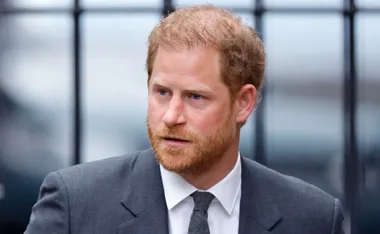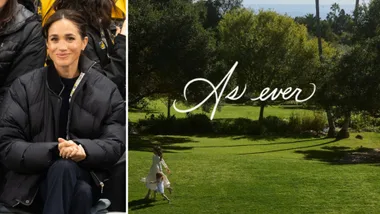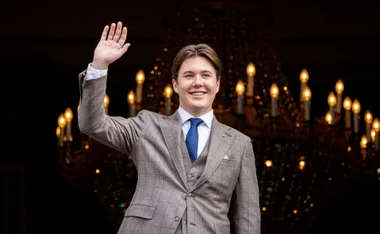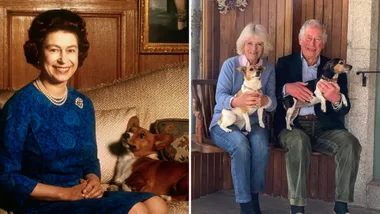Two weeks before it went on sale, Finding Freedom was already an Amazon UK bestseller just from pre-orders and, thanks to sneak peek early media extracts, the most talked about royal book since Andrew Morton’s 1992 Princess Diana biography.
It’s one of a glut of exposés about the Duke and Duchess of Sussex, but from the moment it was first announced, the authors – reputed and seasoned royal reporters Omid Scobie and Carolyn Durand – have been besieged.
For while the heady romance of the union between Prince Harry and US actress Meghan Markle and their subsequent explosive split from the House of Windsor is innately fascinating, the most urgent issue for royal watchers has been the provenance of the book’s narrative.
Finding Freedom is the most talked about royal book since Andrew Morton’s 1992 Princess Diana biography.
With no sight of the whole text, commentators declared that the Duke and Duchess must have been personally involved, that Finding Freedom is in reality a thinly veiled platform for the couple to put their side of what has become a fiercely contested story.
Many erroneously suggested that the authors had worked with the couple in much the same way Prince Harry’s mother had co-operated with author Morton for Diana: Her True Story.
But when I talk exclusively to Omid Scobie from his base in London and Carolyn Durand, who is currently residing in the US, they are both adamant that there were no on- or off-the-record interviews with Harry and Meghan.
What’s more, their claims are backed up by a seemingly conclusive statement put out on behalf of the Sussexes: “The Duke and Duchess of Sussex were not interviewed and did not contribute to Finding Freedom. This book is based on the authors’ own experiences as members of the royal press corps and their own independent reporting.”
Rather, Finding Freedom sets out to present “an accurate portrait of Harry and Meghan”, the real people behind the sniping tabloid gossip, the facts about who said what, where and when, and the extraordinary circumstances that led to the House of Windsor’s new star couple leaving ‘the Firm’ for a new life in California.
To this end the authors spent two years frantically working on the book and achieved unparalleled access to “those closest to the couple: friends, trusted aides, senior courtiers and many individuals in the Sussexes’ inner circle”.
They spoke to more than 100 sources and gathered “hundreds of hours of interviews on tape and filling notebooks,” Omid tells me.
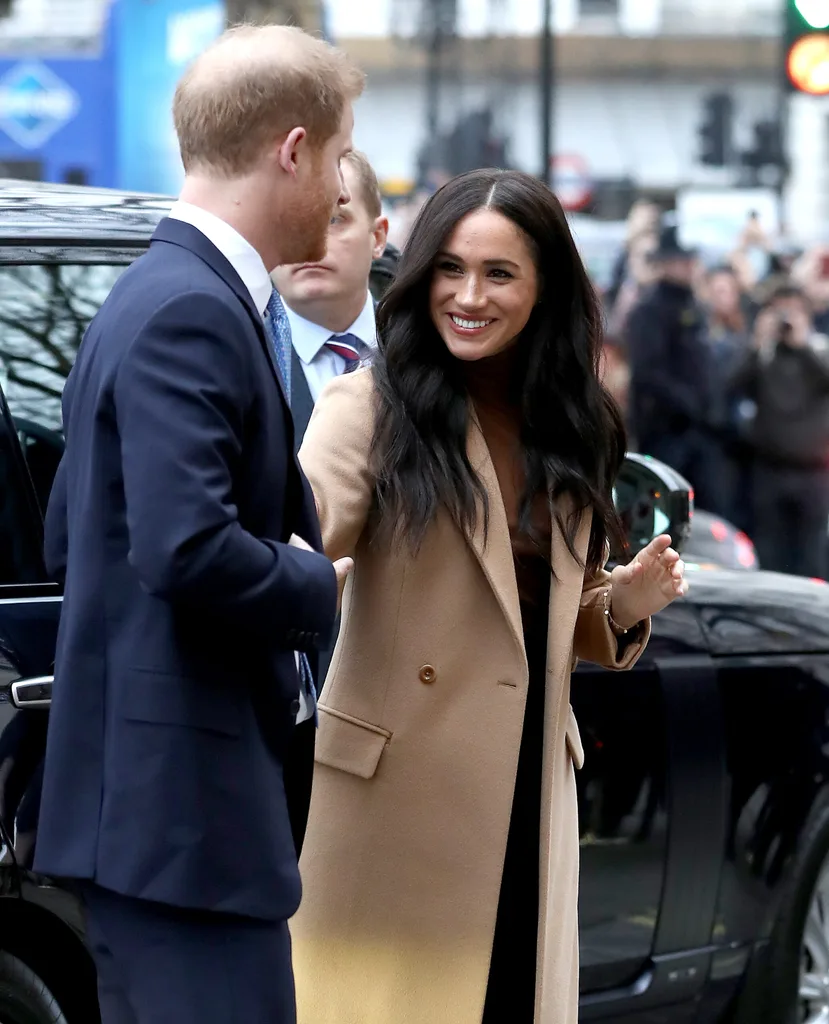
The authors of the biography spoke with more than 100 sources.
(Getty)From my early access to the book I can reveal that it is an illuminating read: impressively detailed, lifting the curtain on the couple’s private world so vividly that it feels as if we have a ringside seat to what has clearly been a tumultuous and emotional four years.
Intimate revelations include the early course of the couple’s secretive courtship; the antagonism Harry and Meghan felt they faced from courtiers, the media and even Prince William; Meghan’s struggle with her father, Thomas Markle, in the lead-up to the wedding and since; the truth about a host of negative media stories surrounding the royal duo; how Harry believed he was being sidelined by the monarchy itself; the details of the so-called ‘Sandringham Summit’ with Her Majesty, Prince Charles and Prince William in January this year which decided the couple’s fate and much more.
As a royal reporter I was familiar with most of the content, but the level of insight into private moments, and especially Meghan and Harry’s mindset as their royal lives splintered beyond repair, is gripping. There are direct quotes from conversations between members of the royal family, between Meghan, Harry and friends and from palace courtiers.
Much of what Omid and Carolyn have uncovered takes issue with previous media reports, but they attest that their journalistic process was rigorous, with every fact double sourced and, in many cases, backed up by three, four or five independent witnesses.
“We worried at the beginning about what kind of access we would have to sources, but in the end we were overwhelmed by the amount of people who came forward,” says Omid.
“We wanted to get everyone’s voices in the book because there were a lot of friends on their side talking who have been frustrated by what they’ve read in the press. I think in a way the book became a safe place for some of those people to speak for the first time.”
Sources spoke with the protection of anonymity, which can feel like a cop-out that prevents scrutiny, but Omid says it was vital in the world in which the royal couple inhabit where social media trolls are spiteful and mainstream media is voracious.
“We were overwhelmed by the amount of people who came forward,” says Omid (pictured).
(Twitter)“We’re talking about people who don’t want to be dragged into the chaos and noise that exists in Harry and Meghan’s lives,” Omid explains.
“It’s not new for Harry and Meghan, whereas for a mother of young children who just happens to know Meghan, it can be quite unnecessary and unwelcome to suddenly have the press dragging her into it. Once those names are out there 30 other media organisations are going to be trying to talk to them.
“Also … people are more comfortable when they can speak in anonymity. Not only are they speaking out against actions of the press; they’re also speaking out against things they may have seen within the [royal] institution. You have to realise that we spoke to aides that had once worked for the palace and had some insight that they wanted to share in a safe place.”
Indeed, some of the most explosive material in the book came from within palace walls from staff past and present who the authors say come from all three royal households – Kensington Palace, Buckingham Palace and Clarence House.
While the palace communication teams regularly offer off-the-record information to journalists, the deluge of commentary Omid and Carolyn have uncovered is remarkable.
I ask Carolyn why she thinks people were so keen to talk.
“I think there’s always a sense of making sure that the historical record is accurate and because of the misreporting that sometimes took place, there were people who really wanted to set the record straight,” she explains.
Carolyn won’t discuss whether the friends of the couple who spoke out did so with Harry and Meghan’s blessing, but I guess the answer will come from the couple themselves, who have already shown they are not afraid of taking legal action to protect their privacy, with three separate cases ongoing.

“There were people who really wanted to set the record straight,” Carolyn explains.
(Getty)When I ask Omid about the possibility of being sued he seems unconcerned. Both authors feel their redrawing of the Harry and Meghan story brings welcome clarity and the integrity of their fact gathering speaks for itself.
“I think there’s this notion that these are people who have been hand-delivered to us to put together a book that reflects what the couple want out there, and it couldn’t be further from the truth,” he says.
“Many people felt very frustrated by what they saw the couple dealing with and wanted to do what they could to help. Rather than giving out private details that the couple would hate to have in the public domain, this is correcting things that already exist in the public domain.”
When they first started on the book Omid and Carolyn had a very different narrative in mind.
“We thought we would cover their courtship and their first year of marriage and that would be that. Then we had the great news that [baby] Archie was on his way. But it was around the time of Archie’s birth that I think we started to realise that things behind the scenes weren’t as rosy as one might expect,” says Omid.
“Some of the people working with them were unhappy about how the Duke and Duchess were being treated and the situations that they had with the press, and also we saw the difficulties they were facing within the institution when it came to airing their grievances and being hurt [by their treatment]. It made sense for Carolyn and me to ride it out to see where this was going. By the time we got to the African tour everything was ready to be almost blown wide open.”
The book was initially Carolyn’s idea. She had worked with Prince Harry producing US TV specials, including an interview between the royal and Michelle Obama, and it was the Invictus Games in Orlando in 2016 which finally sparked her imagination.
“I was struck in a way that I never had been before about who Harry was: that despite his birthright, everything that he’d done to carry on his family’s legacy and his mother’s legacy, the commitment that he had to do something with his position, to help all sorts of people around the world and to see these people, men and women, some of them multiple amputees, lifting themselves up on to swimming blocks and having a sense of purpose … that was when I knew that I was ready to write a book on Prince Harry, ” she says.
“Then Harry met and fell in love with the now Duchess of Sussex. He found his soulmate and all of a sudden you had these two people who were devoted to doing something for the public good. It was just such a magical incredible story and I went to Omid because we came from very different journalistic backgrounds but we both were so enamoured for their commitment to philanthropic and humanitarian endeavours. You know, Harry could have lived a very simple, easy life and he chose not to do so.”
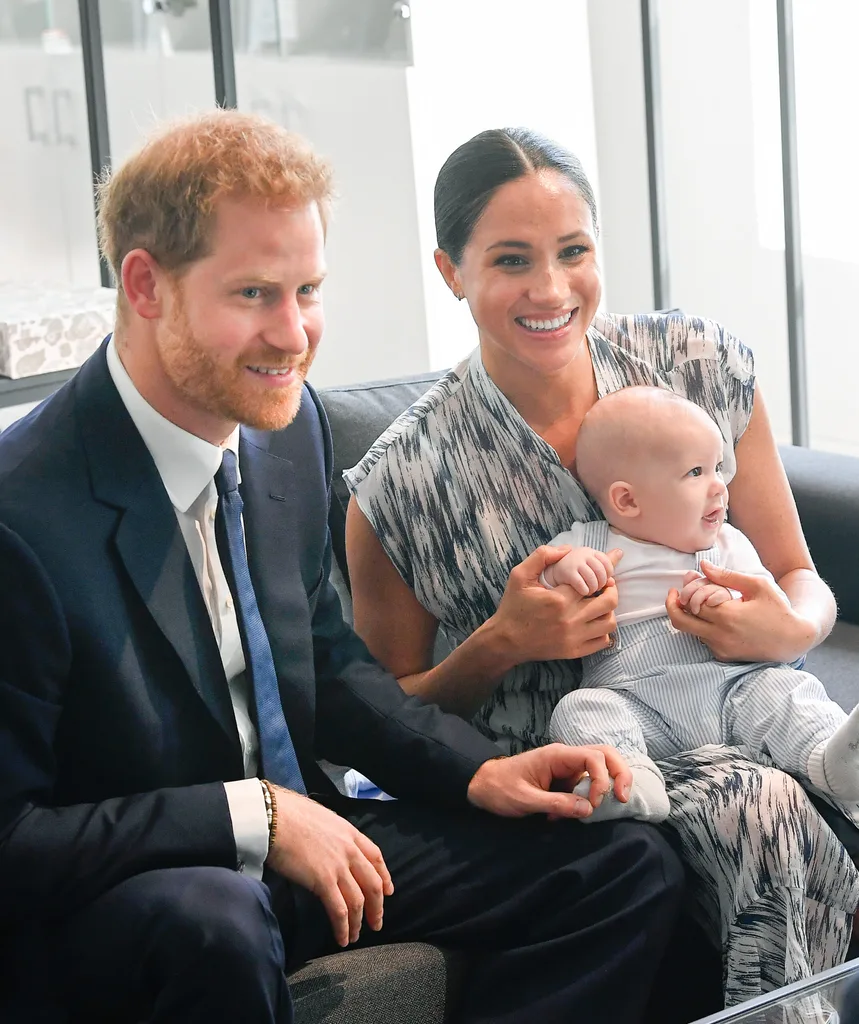
The book was initially Carolyn’s idea back in 2016.
(Getty)One of the key narratives in the book involves the relationship between Prince Harry and his brother, Prince William. The brothers have been side by side through the trauma of losing their mother and life in the spotlight and have always had each other’s back. But since Meghan entered Harry’s world media started to talk about a rift which the authors explore in detail.
With protective palace advisers “whispering words of alarm into the Duke of Cambridge’s ear” and William’s own inbuilt caution regarding newcomers, the book portrays William counselling Harry.
“‘Don’t feel like you need to rush this,’ William told Harry, according to sources. ‘Take as much time as you need to get to know this girl.’
In those last two words, ‘this girl’, Harry heard the tone of snobbishness that was anathema to his approach to the world … William may have felt he was acting out of concern but Harry was offended that his older brother still treated him as if were immature.
‘Harry was pissed off,’ another source said. ‘Pissed off that his brother would ask such a thing.’
Some felt it was an overreaction. But then, this totally sums them up as people – William the calm and rational one, and Harry, who can’t help but take things far too personally.”
It’s a powerful scene which goes some way to explaining the sort of sibling divide which happens in most families.
“I think William is an incredibly caring and empathic individual,” explains Omid.
“But, we have to realise that this is a dynamic between two brothers, of whom William has often been the one looking out for Harry. They are now both well into their 30s and perhaps Harry is at a place in his life where he doesn’t need unsolicited advice on everything he does.
“We have also to note that Meghan was already on the receiving end of quite a bit of ‘othering’ and ‘isms’ at that point. Harry felt that previous girlfriends like Cressida [Bonas] and Chelsy [Davy] had been welcomed with wider arms. Harry was aware of the talk [criticising Meghan’s socio-economic and theatrical background].
“I think we all know Harry as being incredibly sensitive and he wears his heart on his sleeve and I don’t deny that there definitely was some sensitivity that would have contributed to that reaction that followed, but I think at the same time, as an adult who has seen much more of the world than he had 10 years ago, he was right to question the intent of the comments being made to him, whether to his face by his family or behind his back.
“We have that moment where Harry and Meghan have just given the interview with [TV journalist] Tom Bradby in Africa [for the documentary Harry & Meghan: An African Journey in which both revealed their unhappiness] and William and Kate finally see it on television with the rest of the nation and immediately there’s a guidance given from Kensington Palace that William was almost concerned for his brother’s mental health.
“The friend of Harry’s that I spoke to said that Harry saw that as ‘a new low’. Why would anyone think it was okay to brief that kind of thing to the press? … So we constantly have a situation here where private information or opinion is being aired from his brother’s quarter and Harry doesn’t see or feel that his brother is doing anything about it.”
Watch a segment from the documentary below:
The authors also explore another divisive narrative dubbed “the duelling Duchesses” – pitting Kate and Meghan against each other.
“Don’t people love a catfight between two women!” sighs Carolyn.
“You have two extraordinary women who are doing admirable jobs, trying to be mothers and public servants and duchesses, and we don’t need to compare them. But I don’t think they necessarily need to be the best of friends. We have to remember they’re women in their 30s. Meghan’s interests are different from Kate’s.”
The book goes further with many friends saying Kate didn’t welcome Meghan.
“I think having both been newcomers to a unique household, there were times when it could have benefited their relationship if Kate had put that arm around Meghan or brought her in a little closer, especially during those very difficult moments throughout the pregnancy,” adds Omid.
“Meghan’s words in Africa about no one asking how she was were very telling. I think it was that distance or stand-offishness on Kate’s side that stopped the friendship from developing to anything more than cordial sisters-in-law. But what I hope people take away from this book is that they were also never at war. There was never a big bust-up.”
While the book also suggests that Harry and Meghan felt sidelined within the monarchy, the detailed chapter on the ‘Sandringham Summit‘ underlines that Prince Charles’ slimmed-down monarchy always included both of his sons, explaining “William will always be more important than Harry but that’s a fact only because of birthright”.
In the end the book suggests it was Harry’s grandmother, the Queen, who decided that his idea to work half-in and half-out of the royal firm was “untenable”. It was a terrible blow to the young royal.
“Harry likened his meetings throughout the week to standing in front of a firing squad,” the book says.
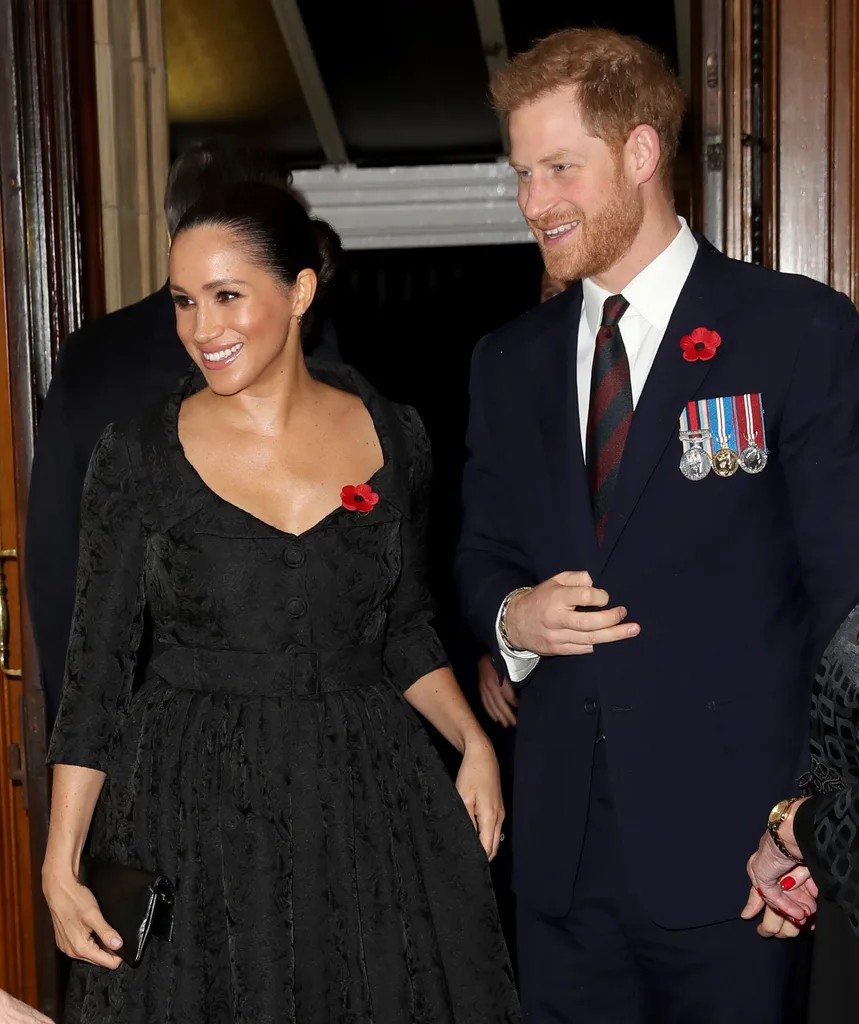
Omid feels the biography is “much more balanced” than has been reported.
(Getty)So, will there be repercussions from these revelations for the monarchy?
Omid says he feels their book is “much more balanced” than has been reported.
“Harry and Meghan’s roles as working members of the royal family didn’t work so we need to figure out why that happened. Two people unfortunately were victims of things that really hadn’t been properly prepared for them in order to allow them to work in the best way possible and create meaningful roles that would not only have had impact on their lives as members of the royal family and for the monarchy itself, but also would have allowed them to thrive within those palace walls.”
The Queen has left the door open for Harry and Meghan to return but both Omid and Carolyn feel their future is in the US.
“The issues that they’re connected with are exactly the same. It’s still gender equality, fighting racial injustice. I think we’ll see a lot more of them taking on online bullying, and, of course, Harry’s involvement in military and environmental welfare. But now they will have the freedom to take on those topics in different ways,” says Omid.
And far from an ending, Carolyn sees a shining beginning.
“They’re certainly going to model their lives on people like Bill and Melinda Gates and the Obamas and if they’re able to create that kind of legacy. I think it’s going to be extraordinary.”
Read the full article in the September issue of The Australian Women’s Weekly, on sale now.
